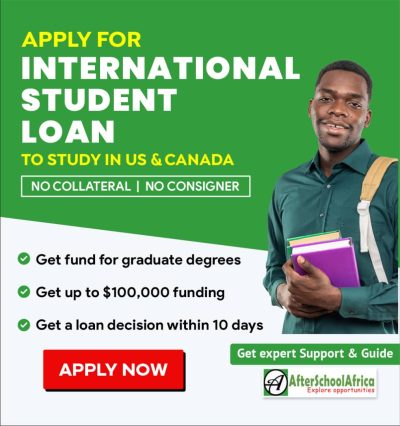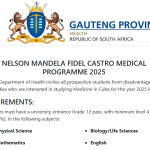The United States have made Both temporary and permanent pathways to live and work in the states in 2025 available to foreign professionals in STEM (Science, Technology, Engineering, and Mathematics) disciplines by the U.S. government. These changes are a part of a continuous endeavor to draw in talent from around the world and strengthen the nation’s position as a leader in technology, innovation, and research.
This week, a thorough summary of the many nonimmigrant (temporary) and immigrant (permanent) choices catered to the requirements of international STEM professionals was issued by the U.S. Citizenship and Immigration Services (USCIS). The revised guideline outlines new opportunities, many with fast-tracked or self-petition alternatives, for foreign workers, researchers, students, and individuals with exceptional talent to enter the U.S. workforce.
Table of Contents
Highlights of the 2025 Update to the STEM Work Visa Policy
To combat the 2025 shortfall of STEM professionals in the US, the following two significant improvements have been made:
Nonimmigrant (Temporary) Pathways: For Working in the U.S. Short-Term
| Visa Type | Description | Validity |
|---|---|---|
| F-1 Optional Practical Training (OPT) + STEM OPT Extension | International students in STEM fields can work for up to 36 months without needing a job offer for the first 12 months. | Up to 36 months |
| H-1B Specialty Occupations Visa | For professionals with at least a bachelor’s degree in high-skill sectors. Requires employer sponsorship. | Initial: 3 years; Extendable to 6 years (further extensions for green card applicants) |
| O-1 Visa for Individuals of Extraordinary Ability | For professionals with national/international achievements. No numerical limit; indefinite extensions available. | Indefinite (with extensions) |
| J-1 Exchange Visitor Visa (STEM Focus) | Allows STEM professionals to work under Department of State-approved exchange programs. | Up to 5 years |
| L-1A and L-1B Intracompany Transfer Visas | Enables multinational firms to transfer executives or skilled workers to U.S. offices. | 5–7 years depending on category |
| TN Visa under USMCA (for Canadians and Mexicans) | No annual cap and unlimited renewals for eligible STEM professionals in approved roles. | Unlimited renewals |
Immigrant (Permanent) Pathways: For Those Seeking Green Cards
| Visa Type | Description | Requirements |
|---|---|---|
| EB-1A – Extraordinary Ability | Allows self-petitioning with no job offer or labor certification required. | Must demonstrate extraordinary ability in STEM or other fields. |
| EB-1B – Outstanding Professors & Researchers | For internationally recognized professors/researchers with a job offer. | No labor certification required. |
| EB-2 with or without National Interest Waiver (NIW) | For professionals with an advanced degree or exceptional ability. Self-petition possible under NIW. | NIW requires work to be of significant U.S. interest. |
| EB-3 – Skilled and Professional Workers | For bachelor’s degree holders or skilled workers with 2+ years of experience. | Requires labor certification. |
What Are the Key Questions to Consider When Choosing a STEM Pathway?
Do I have the education, experience, or skills needed to qualify?
Certain visa categories, like the EB-1A immigrant visa category and the O-1 nonimmigrant visa category, are reserved for people with “extraordinary ability.” For these, one must be widely and consistently acclaimed. A suitable bachelor’s degree or its equivalent is required for some, such as the H-1B. Additionally, some, like the L-1, demand an existing connection with a business that conducts business both domestically and outside.
Do I need to have a job offer? Do I need a company to submit a petition for me?
For the majority of paths, you must already have a work offer; if you don’t, your company will petition USCIS on your behalf. Certain classifications, however, allow you to apply or petition USCIS directly (also known as “self-petitioning”) without a job offer. For instance, you do not require a job offer or an employer to submit the immigrant petition on your behalf if you are applying for lawful permanent resident status (a Green Card) based on your classification as an individual with “extraordinary ability” (the EB-1A category). You can submit the petition yourself. In this instance, a job offer is not necessary, but you must present proof that you are traveling to the US to continue working in your area of expertise.
Will I be working in the United States permanently as a lawful permanent resident, or will I be working temporarily as a nonimmigrant?
Some opportunities provide a basis for persons, notably STEM professionals, to gain permanent residence status in the United States. Permanent resident status allows you to live and work in the United States forever and often provides you with a path to citizenship. These are referred to as “immigrant” pathways.
Others, referred to as “nonimmigrant” paths, permit you to reside temporarily and work in the United States (such as F-1 OPT, H-1B, L-1, and O-1). Many people who do work through one of these nonimmigrant pathways eventually move to permanent resident pathways and eventually U.S. citizenship.
Are there any other criteria that are required for a specific pathway?
There may be some timing or other requirements specific to certain pathways, such as the need for the employer to first obtain an approved labor certification from the U.S. Department of Labor, which confirms that there are not enough qualified, willing, and able U.S. workers to fill the position and that such employment will not negatively affect the wages and working conditions of similarly employed U.S. citizens. Other criteria that are not directly related to professional qualifications may also affect visa eligibility, such as the fact that only citizens of Canada and Mexico are eligible for TN visas.









